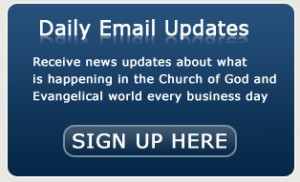The Evolution of the Internet
It hardly seems possible that the world wide web, www. Has grown to over 260 million users in the United States alone. Nearly 2 Billion people around the world are online, 1/4 of the earths population! The statistics are astounding.
It is interesting that the two words for online access are the “web ” and the “internet.” We like to think of it as just that… a web or a net. Millions of people use this vast resource for their own pleasure to include things like pornography and learning how to make bombs! For many it is truly a “web of sin.” However, it is also used as a “net.” A way to bring people to know Christ, create relationships, and offer nearly unlimited Christian resources.
Join us in choosing to use this vast resource and connector as a “net.” After all, we are to be “fishers of men” right? Let us not turn away from it, but rather join in and combat evil with the light of truth.
So how has the internet involved? Well in the beginning, web 1.0 was a one way information superhighway. Everything from the phone book, to driving directions, text books, and movie times was available for the first time online. Between Google, AOL, Yahoo, and other giant web start-ups the internet had become the richest source of information available. Moving far beyond the expectations of its creators in the military and university sectors, the internet began to grow in the private sector exponentially. Soon people came to realize that a one way information highway was very useful for just about everything. That is when the minds of inventors and business people came to realize the untapped potential of the internet. The term Web 2.0 is a pop-culture phrase often used to describe the evolution of the internet into something more than an information resource. Web 1.0 was hardly more than a book with millions of pages that was easy to navigate, Web 2.0 is a two way information dialog between the many users of the internet. Sites like Facebook, Myspace, Youtube, and Google Apps began to revolutionize the way we use the internet. Not only can ordinary people easily share content, they can communicate and build relationships using tools like social networking websites. The news media is being replaced by citizen journalism in blogs that started as simple diaries, and are now competing with national news networks. Technology now lets old friends reconnect, business people connect with a new audience, and ministry leaders find a new voice. What started as a wave of youngsters and college kids using instant messaging has become a marketplace of ideas and information for people of all ages.
As mobile devices begin to show up in peoples pockets with the power of the internet, this two way highway of information and communication is stretching into every other pocket of society. Technology that connects us is finding its way into cars, restaurant menus, and television. People today spend as much time using social networks like Facebook as they do watching television. An information revolution is happening.
So how do people find you in this information jungle with billions of web pages already in existence. The first step is to buy a domain name. An email address is simply not enough in todays day and age. A domain name is your address in cyberspace for your website and email. If you imagine that the information super highway has cities, towns, and roads, you need to have a digital address. Your domain name (like www.yousitename.com) is your digital address. It will allow people with internet access anywhere to connect with you. You can think of it as your street address for the internet. Your own domain name is highly preferable to a shared community address. For instance, if you own the domain name “www.yourchurch.com” you can have an email address like “yourname@yourchurch.com”. That is much more descriptive than a community address in gmail or yahoo. You can think of the difference like this. A free community email address is like renting a room in a house with a million rooms. That might help people who know it email you, but you can not give them any information other than what’s in your email to them. With a web address you can make the information people will find useful, helpful and ,available even when you are sleeping. It will also make your email address something people can search for. What if someone does not know that you are the right person to email? Having a domain name with a website is going to help you get listed in Google and Bing, and help new people find your organization, and give them direction on how to contact you, and why they should.
Getting your own domain name is easy. In general, you should try and think of a name with two to three words that will be easy for someone to remember. An example of a good domain name is: winterstechnologygroup.com. You would not want your domain name to be much longer than that. Two to three words should be the maximum. Here is an eample of a bad domain name: firstchurchinpensacolaflorida.org. If you need a more descriptive name you may consider shortening the name by replacing words with individual letters. For example you could change that domain name to: fcpf.org. This will be easier to write and remember than the long drawn out version, and people will understand what it means when they see it on letterhead.
Ready to buy a domain name? Winters Technology Group has been helping people take their first steps and get online for years. They specialize in helping ministry and business leaders navigate the realm of web publishing.
Ready for a new website? Winters Technology Group is working directly with the Church of God to offer affordable website solutions for pastors. Getting started is easy, and affordable.





